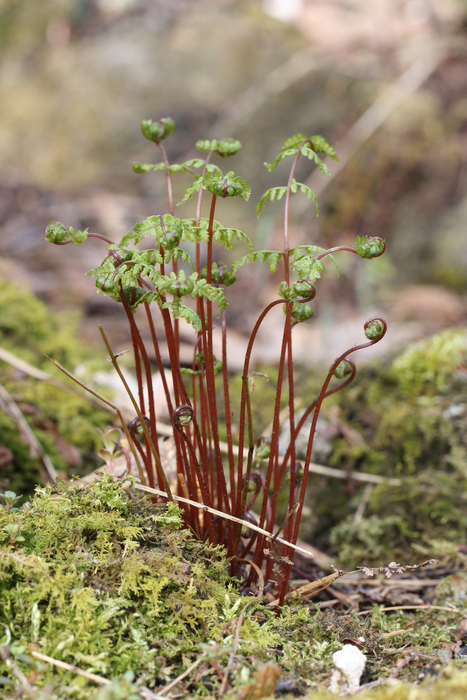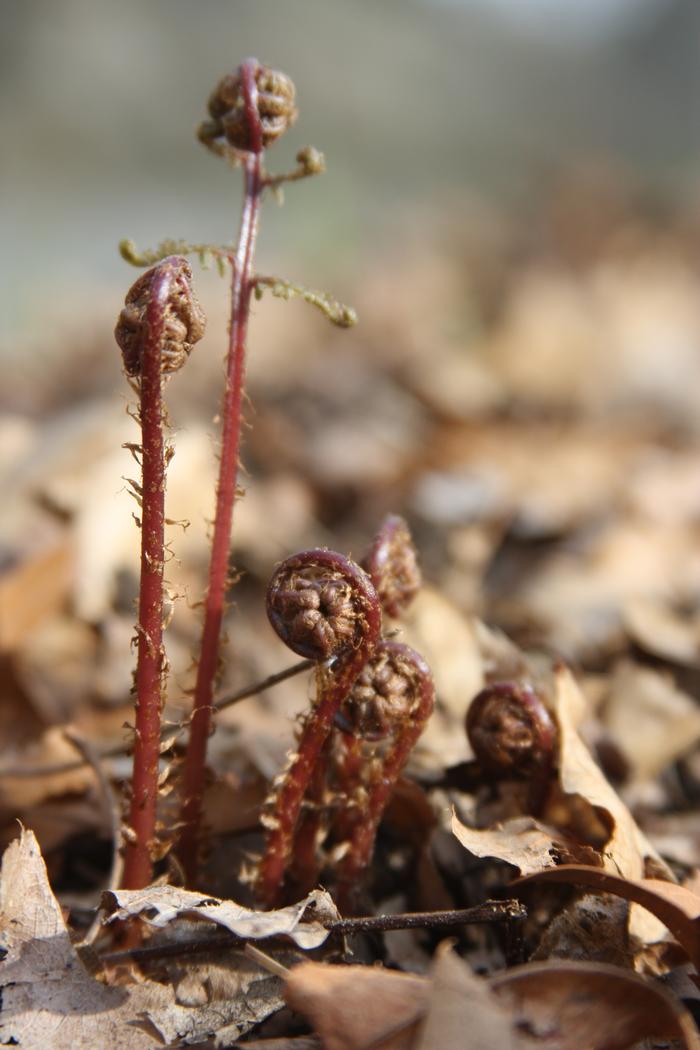General Description
Bloom Description: No flowers, the fiddleheads have scattered black scales on the light green stems
Growth Habit & Shape: A mid-sized, vase shaped fern that grows well in a variety of locations. It readily forms colonies in shade, but can also serve as a good specimen plant with a bit more sun.
Soil Preferences: Prefers organically-rich, average to moist soils.
Root Description: The roots are an upright rhizome, meaning that the plant forms individual vase-shaped clumps within a broad colony stemming from the same or overlapping rhizomes.
Garden Uses: Appropriate for shade gardens, Japanese-style gardens, shady corners, moist nooks and low spots.
Best Management & Maintenance: Athyrium angustum is easy to grow, tolerating dappled shade or morning sun. It prefers moister soil when planted in sunny spots, but in shade it thrives so long as drought is avoided. The main hazard faced by this fern as garden plant is trampling, which harms the shallow rhizome. Otherwise, this fern readily forms masses of individuals - sometimes fairly close together.
Common Problems: Abiotic: Intolerant of long periods of drought or of full sun.
Biotic: Generally none.
Benefits
Ornamental Value: Fine texture and loose colonies make this a great addition to the garden. This species blends in with numerous plants and is a good accent plant for the garden.
Wildlife Benefits: In New England, few wildlife benefits-- this species contains filicic acid, toxic to numerous mammals, but deer may browse in the absence of other food sources. Otherwise, it may serve as cover for a variety of small mammals and birds.
Other Practical/Environmental Benefits: Some soil stabilization when allowed to form colonies
Use in place of: Non-native ornamental fern species
Ecology
Habitat:
Floodplain (river or stream floodplains), forest edges, forests, swamps, woodlands
Response to Disturbance: Athyrium angustum is relatively easy to grow, having few problems and few pests.That said, fern roots and young fiddleheads grow close to the soil surface and can be easily damaged by trampling. Because this species is tolerant of a wide range of light and soil conditions, it will handle disturbance more readily than fern species that are typically found in deep woods settings. Plants may regenerate from fragments of rhizome.
Native State Distributions:
Canada: Greenland; Man., N.B., Nfld., N.S., Ont., P.E.I., Que., Sask.
USA: CT, DE, IL, IN, IA, ME, MD, MA, MI, MN, MO, NE, NH, NJ, NY, NC, ND, OH, PA, RI, SD, VT, VA, WV, WI.
Wetland indicator status: FAC
References
Return to Top


